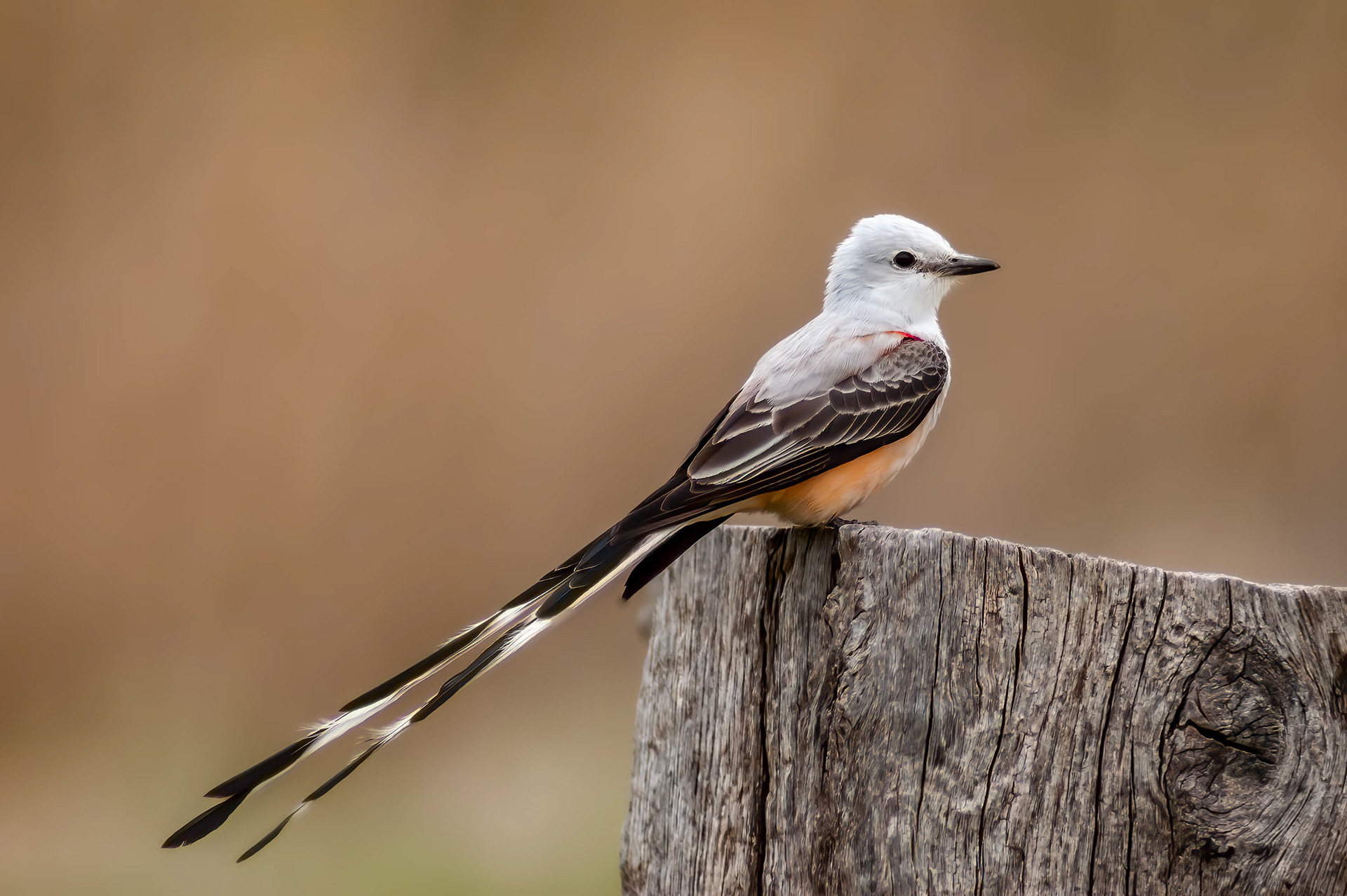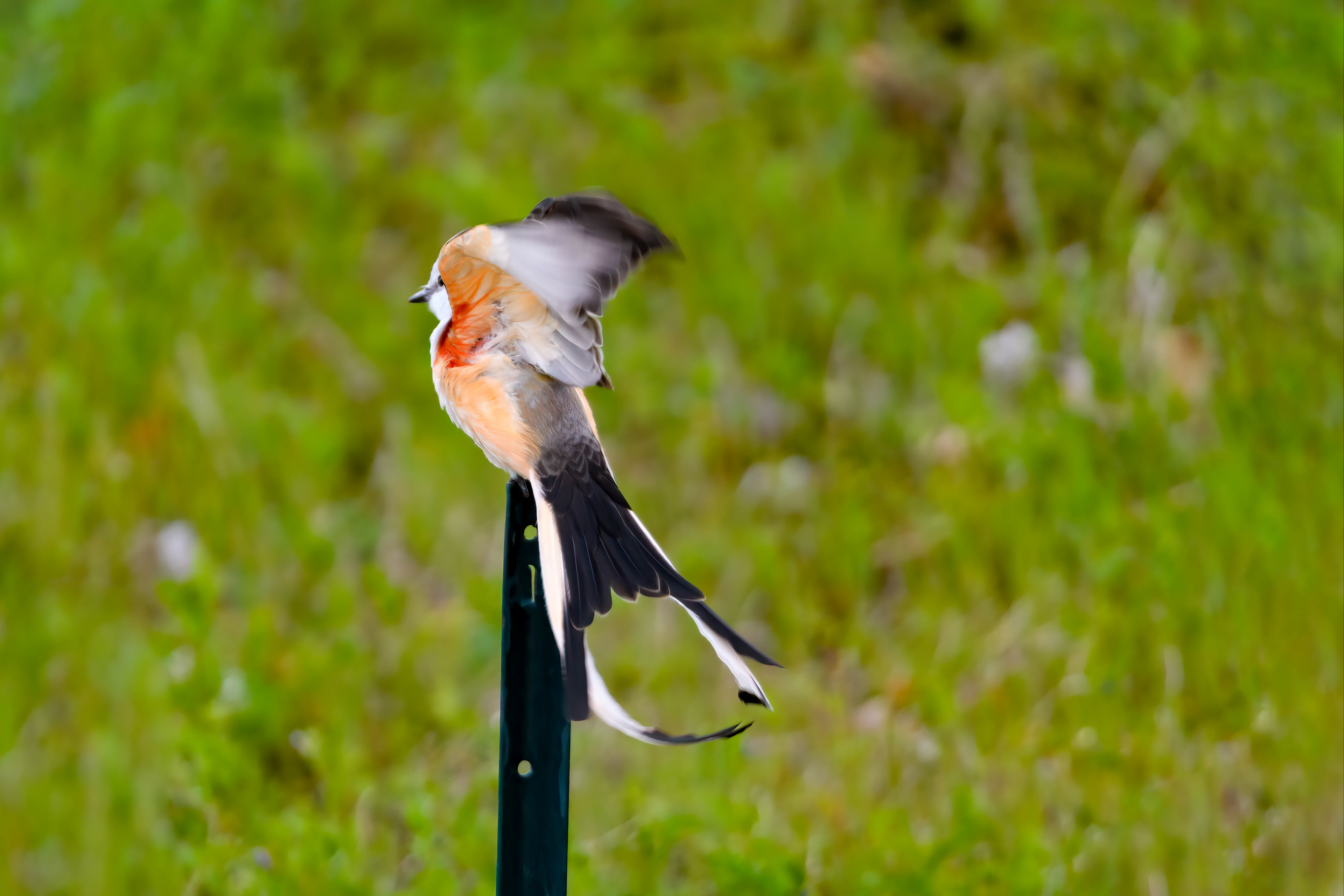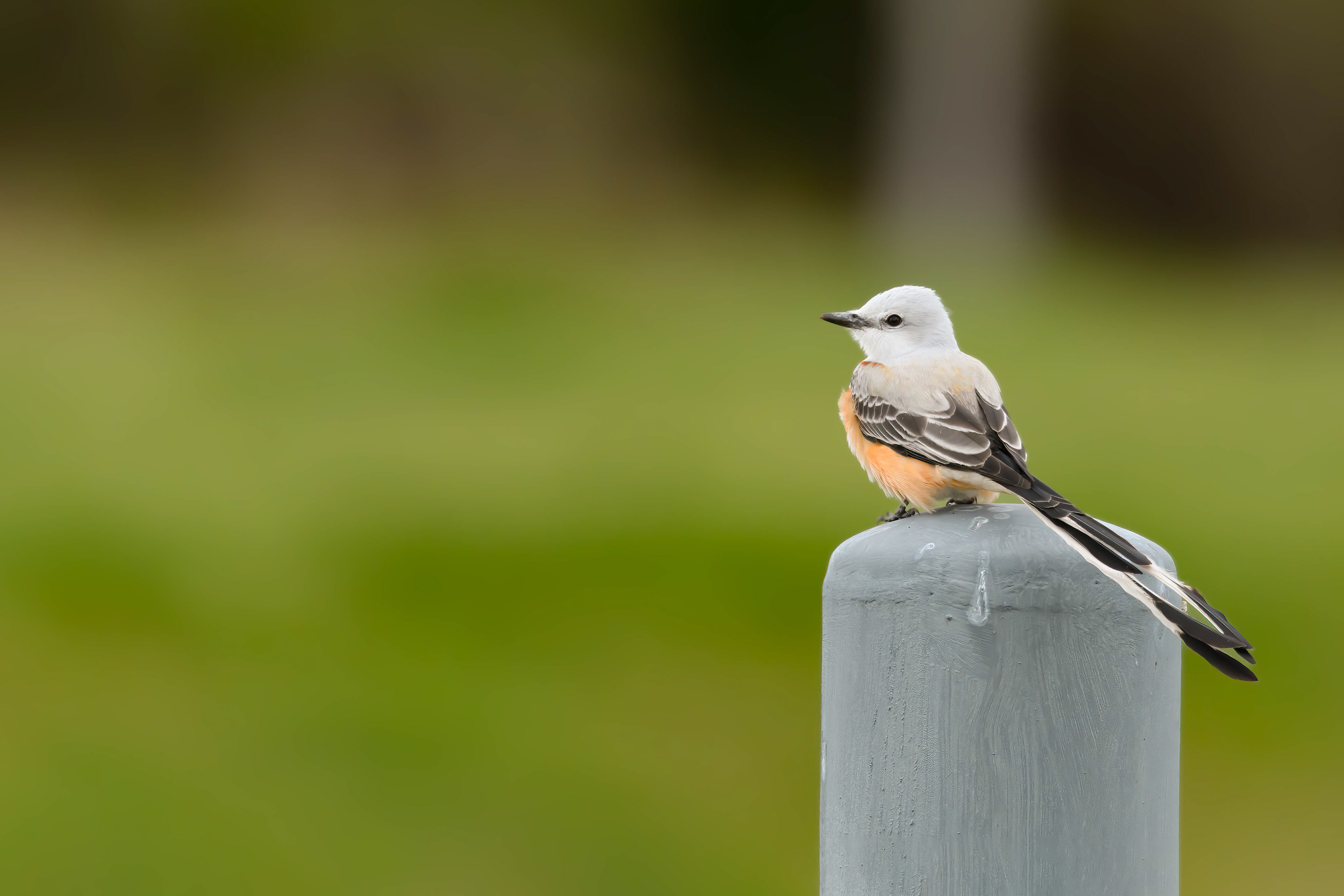
Scissor-tailed fFlycatcher (Tyrannus forficatus)

Scissor-tailed fFlycatcher (Tyrannus forficatus)

Scissor-tailed fFlycatcher (Tyrannus forficatus)
The Scissor-tailed Flycatcher, scientific name Tyrannus forficatus, is a medium-sized passerine bird that is native to North and Central America. It is commonly found in open grasslands, pastures, savannas, and along roadsides in Oklahoma, particularly in the central and southern regions of the state where they are abundant.
Appearance
The Scissor-tailed Flycatcher is a slender bird that measures approximately 8-14 inches in length and weighs around 1-2 ounces. It has a long, forked tail with elongated outer feathers that give it a distinctive scissor-like appearance in flight. The body of the bird is gray on top, and pale grey-white on the underside. It has rusty-colored patches on its sides and an orange-colored patch on the underside of its wings. During the breeding season the colors become much more saturated the males, reaching a bright flame-orange color.
Behavior
The Scissor-tailed Flycatcher is a highly territorial bird that is known for defending its territory using its acrobatic flying skills. It often perches on wires or other elevated structures, scanning the surrounding area for insects, its primary food source. Once it spots its prey, the bird launches into the air, chasing it down and catching it in mid-flight. The bird is known to be particularly fond of dragonflies and grasshoppers.
Breeding
Scissor-tailed Flycatchers typically breed between April and August. They build nests made of grass and twigs, which they line with softer materials such as feathers and hair. The female lays between 3-6 eggs, which hatch after an incubation period of around 14 days. Both parents share the duties of incubating the eggs and feeding the chicks.
Conservation
The Scissor-tailed Flycatcher is not currently considered a threatened species. However, habitat loss due to land-use changes and urbanization has had a negative impact on the bird's populations. Additionally, the use of pesticides and other chemicals in agriculture can reduce the availability of the bird's primary food source, making it harder for the bird to survive.
In Oklahoma, the Scissor-tailed Flycatcher is a state symbol and is celebrated as a part of the state's natural heritage. Efforts to protect the bird's habitat and educate the public about its importance have been ongoing, and Oklahoma residents are encouraged to support these efforts to ensure that the Scissor-tailed Flycatcher remains a part of the state's ecosystem for generations to come. Randy C. Anderson
